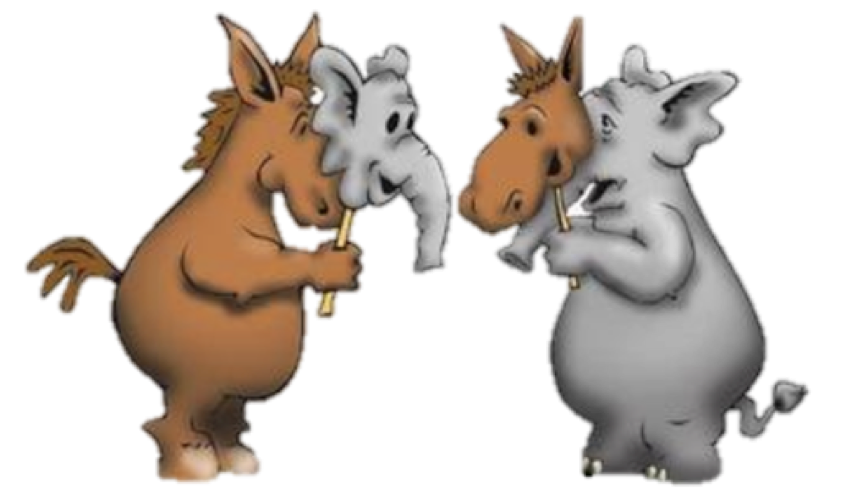CommentsEASTSIDER-Most of us go about our business assuming that our “democratic” system of voting is basically OK, except for the Russians (and who knows else) meddling with social media to influence us. But a look at our statutes reveals another story in which Democrats and Republicans get to freeze anyone else out.
For example, did you know that every single State in the Union gets to set up its very own rules for who gets on the ballot? Yep, as Wikipedia notes:
“Each U.S. State has its own ballot access laws to determine who may appear on ballots. According to the Elections Clause in Article I, Section 4, of the United States Constitution, the authority to regulate the time, place, and manner of federal elections is up to each State, unless Congress legislates otherwise.”
Well, Congress has never weighed in, because each Secretary of State is either a Republican or a Democrat, and so the two main political parties get to control who can actually run for office other than Republicans or Democrats. You know, manipulating whether and how a candidate or party can actually get on the primary ballot. That includes manipulating filing requirements and deadlines.
How Elections Really Work
First, there are really only three ways that an individual can become a candidate:
(1) get nominated by a state recognized political party
(2) run as an independent, petitioning under whatever state rules are in place
(3) become a write-in candidate
Good luck with any of these.
California has had a particularly not nice set of rules for non-establishment candidates. There are essentially only two ways for an outsider to get on the ballot. Check this language out:
“Per section 5100 of the California Election Code, ballot access requires one of two conditions to be met:
- If at the last preceding gubernatorial election there was polled for any one of the party's candidates for any office voted on throughout the state, at least 2 percent of the entire vote of the state;
- If on or before the 135th day before any primary election, it appears to the Secretary of State, as a result of examining and totaling the statement of voters and their political affiliations transmitted to him or her by the county elections officials, that voters equal in number to at least 1 percent of the entire vote of the state at the last preceding gubernatorial election have declared their intention to affiliate with that party”.
Crystal clear, right?
Further, in presidential primary elections, decline to state voters can request a ballot for the Democratic, American Independent, or Libertarian Party. However, how many voters actually know about any of this? Bernie Sanders, as well as the Libertarian Party, filed suit in 2016 over this issue. I couldn’t ascertain if there is a final disposition as I write this post.
And Then There’s the National Issue
If you think all this is confusing, just think about the practical impossibility of becoming a national party candidate. Every state has their own rules covering elections, including signature requirements, filing deadlines, and primary election dates. If you really want to, here’s a link to current signature requirements and deadlines for Congress.
For those who are really curious about these issues, here’s a link a great article, “Death by a Thousand Signatures: The Rise of Restrictive Ballot Access Laws and the Decline of Electoral Competition in the United Sates.”It’s a dense but good read, and to cut to the chase, here’s their take on the court systems bias:
“Both forms of the political stability argument are rooted in the notion that presidential democracies require a two-party system in order to function effectively, and only parliamentary democracies can function effectively with multi-party systems.”
English translation: third party movements should get lost.
Why This Matters
In California, disgust with both the Democrats and Republicans is now represented by a statistically significant group, called decline-to-state. Almost 24% of California voters are now registered “Decline to State.”
The other factor is that there areless voters who participate in the primary process.
Put these two factors together, and it means that there is a tendency for party establishment candidates to wind up in the general election, even as the decline to state registered voters have repudiated one or the other party.
In other words, we tend to get stuck with the Nancy Pelosi/Chuck Schumer establishment candidates by the time November rolls around. And just in case you think I’m cynical, check out the recent rule change by the DNC that would allow only registered Democrats to run for the Democratic Party nomination. That’s right, Fox News got this one right.
Seems to me that the more you dig down into how our Democratic and Republican two-party system works in practice, it’s a mess. They get away with it because you and I get distracted by the bright and shiny objects dangled in front of us by the parties and the media. Underneath the glitter, it ain’t pretty.
(Tony Butka is an Eastside community activist, who has served on a neighborhood council, has a background in government and is a contributor to CityWatch.) Edited for CityWatch by Linda Abrams.















